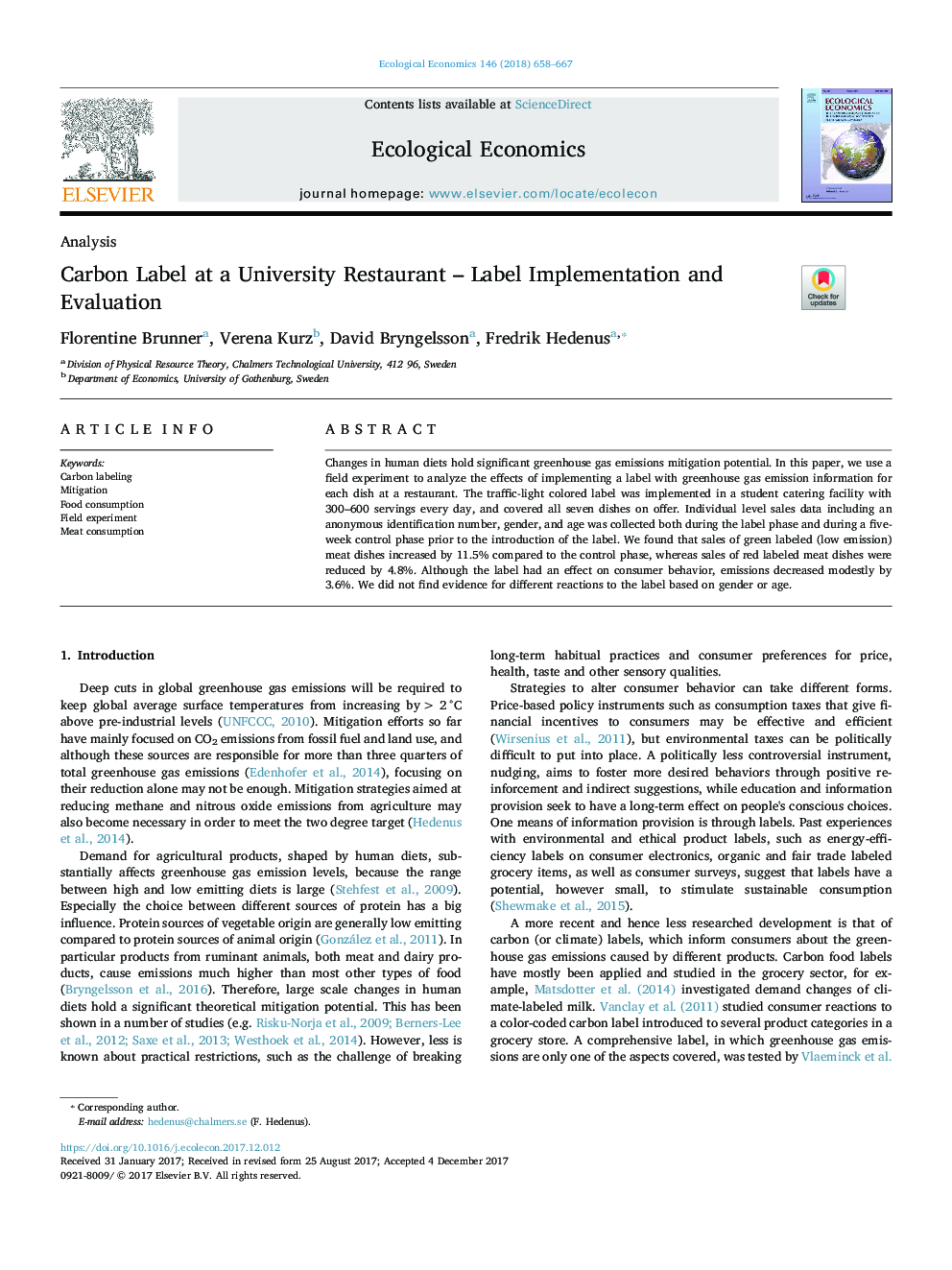| Article ID | Journal | Published Year | Pages | File Type |
|---|---|---|---|---|
| 7344630 | Ecological Economics | 2018 | 10 Pages |
Abstract
Changes in human diets hold significant greenhouse gas emissions mitigation potential. In this paper, we use a field experiment to analyze the effects of implementing a label with greenhouse gas emission information for each dish at a restaurant. The traffic-light colored label was implemented in a student catering facility with 300-600 servings every day, and covered all seven dishes on offer. Individual level sales data including an anonymous identification number, gender, and age was collected both during the label phase and during a five-week control phase prior to the introduction of the label. We found that sales of green labeled (low emission) meat dishes increased by 11.5% compared to the control phase, whereas sales of red labeled meat dishes were reduced by 4.8%. Although the label had an effect on consumer behavior, emissions decreased modestly by 3.6%. We did not find evidence for different reactions to the label based on gender or age.
Related Topics
Life Sciences
Agricultural and Biological Sciences
Ecology, Evolution, Behavior and Systematics
Authors
Florentine Brunner, Verena Kurz, David Bryngelsson, Fredrik Hedenus,
